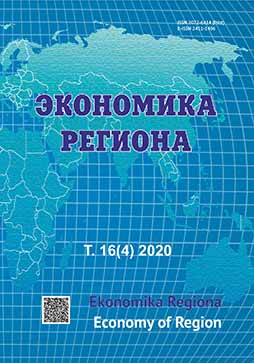Проблемы развития единого комплекса средств макроэкономического межрегионального межотраслевого анализа и прогнозирования
Problems in Developing a Comprehensive Toolkit for Macro-economic, Inter-regional, Inter-sectoral Analysis and Forecasting
Author(s): Valeriy Anatolievich Kryukov, Alexandr Baranov, Victor Pavlov, Viktor Ivanovich Suslov, Nikita SuslovSubject(s): Economy, Supranational / Global Economy
Published by: Институт экономики Уральского отделения Российской академии наук
Keywords: macro-economic inter-regional inter-sectoral analysis and forecasting; dynamic input-output models; dynamic stochastic general equilibrium models; Asian part of Russia;
Summary/Abstract: The study reviews approaches to macro-economic and macro-territorial modelling presented in international and Russian economic publications. We focus on opportunities to improve forecasting the development of economic system in Russia at the macro-economic, inter-sectoral and inter-regional levels. We described dynamic macro-economic, inter-sectoral and interregional models developed in the Institute of Economics and Industrial Engineering of the Siberian Branch of the Russian Academy of Sciences (IEIE SB RAS). We analyse more in details three complex models proposed in IEIE SB RAS: CAISI (comprehensive analysis of inter-sectoral information), SRNES (synthesis of regional and national economic systems) and CSNES (coordination of sectoral and national economic solutions). We consider theoretical foundations of the complex models and their application in analysing and forecasting economic system development at various levels. The three complex models are based on differentbasic models that influence their development. IEIE SB RAS has been developing a two-level system of forecasting models, whichcombines advantages of dynamic stochastic general equilibrium models and dynamic input-output models applied in the CAISIsystem. The paper describes theoretical foundations of the SRNES system, whose latest versions are premised on the generalequilibrium and cooperative games theories. Then, we characterised the most developed elements of the complex model CSNES,which has the CSNES-TEK subsystem used in forecasting developments in the fuel and energy industry of Russia’s territories and SIBARP (balance calculation system for the future). The conclusion outlines directions for further research on improving the methods of macro-economic, inter-regional, and inter-sectoral forecasting based on harmonisation of analytical and forecast calculations performed using the CAISI, SRNES and CSNES systems. The results of forecast calculations using the two-level system of macro-level models can be applied in the complex models SRNES and CSNES to ensure coordination between the forecasts of socio-economic development of the Asian part of Russia and projected dynamics of macro-indicators.
Journal: Экономика региона
- Issue Year: 16/2020
- Issue No: 4
- Page Range: 1072-1086
- Page Count: 15
- Language: Russian

